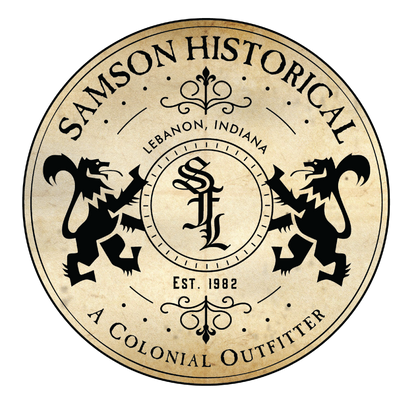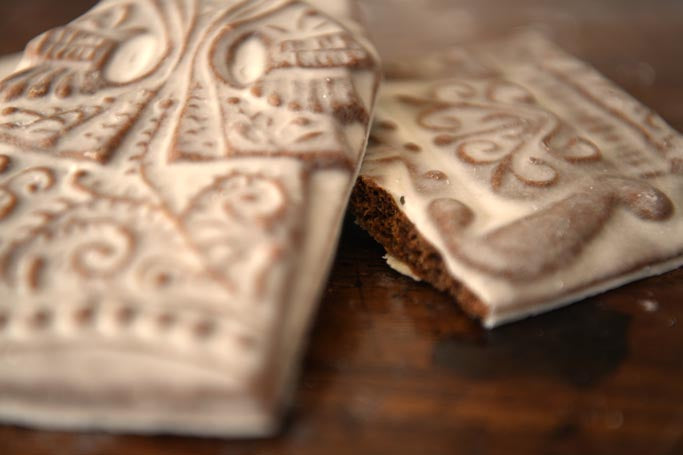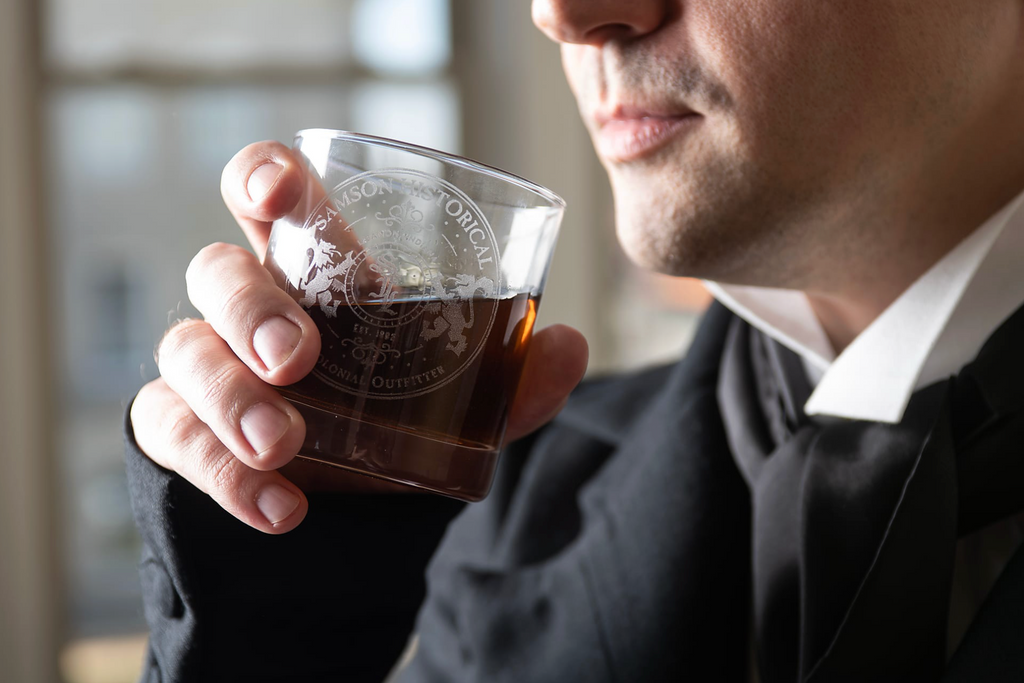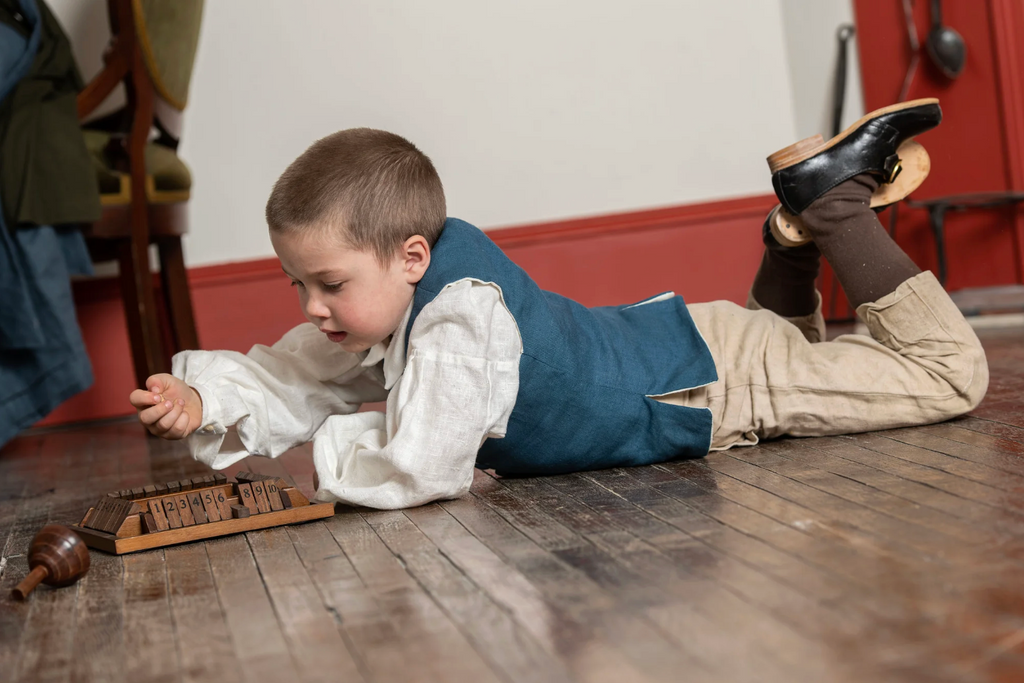You are viewing prices for the United Kingdom 🇬🇧 🏴 🏴 🏴
Menu
-
- Men's Clothing
- Women's Clothing
- Children's Clothing
-
Camping
-
Cuisiner et manger
-
Articles pour la maison
-
At the Sign of the Red Lion
-
- Contactez-nous
- About the Samsons
- Historic Classification Definitions
- Programme de fidélité
- Blogues
- Liste de souhaits
- Bulletin
- Catalogue 2024
- Black Friday Cyber Monday
- (765) 481-2662
- Connexion

You are viewing prices for the United Kingdom 🇬🇧 🏴 🏴 🏴
Men’s Clothing
Women’s Clothing
Children's Clothing
The Violin
par Hannah Reece 11 lire la lecture

by: Robyn Pliuta
The violin is widely considered to be a beautifully expressive instrument. It is indeed a mode of expression for just about every emotion on the human spectrum for modern audiences. Along with its great beauty, the violin has much history to share with respect to American history. It tells the story of various cultures who made their home in the colonies, of political unrest, and of revolution. Songs of victory, defeat, broken hearts, romance, and seasonal celebrations resonated in the taverns, homes, and streets of early America. Thankfully, the act of printing annotated music for dispersion along with lyrics and/or dance steps became popular in the 18th century, and enough have been preserved to provide a glimpse into colonial life.
While the violin has ancient origins, its present form can be traced to 16th-century Italy. The first stringed instruments resembling a violin were bowed instruments popular in 9th-century Byzantine culture, such as the lira -- a pear-shaped, three- to five-stringed instrument still popular in the Balkans today. As trading and cultural exchanges between Europe and western Asia increased, use of such instruments spread and gained popularity. The idea of a wooden sound box with strings and a bow to make tonal vibrations was modified by various individuals, adjusting the tonal quality and physical method of playing.
The modern violin’s design is thought to have been adopted as the common style in the 1530s. In paintings by Gaudenzion Ferrari, the violin, or lira da braccio, is depicted for the first time. Further development into the instrument we so easily recognize today came about in 1556 through the Academie Musicale. A musical treatise by the French Renaissance composer of religious music, Philibert Jambe de Fer, described the instrument’s features and value in musical expressionA musical treatise by the famed Philibert Jambe de Fer described the instrument’s features and value in musical expression. As the violin gained popularity, more individuals wished to learn to play it. Adjustments were made to the design between the 16th and 19th centuries. The fingerboard was lengthened to play very high notes, and tilted to produce greater volume as orchestras grew larger and more commonplace in European and American culture. Violin-makers were known as luthiers. A luthier had to be aware of musicians’ needs, and the constant change in use of the violin. As the assembly process also evolved, so did the need for musicians’ comfort while playing. It wasn’t until the 1800s that the chin rest was produced. Musical styles changed from the 1500s through the 1700s, and European violin-makers eventually brought their craft to colonial America.
The European origins of the violin played a vital role in the formation of early American music and national identity. The violin grew in popularity in America as travelers between the new and old worlds exchanged ideas and current trends in music. English culture still had an influence on American life in the 18th century. An important part of the social scene at this time was were country dances. Not only performed in the country, these community events were a place to hear the latest news and discover the latest music and dance trends. Songbooks were becoming more available by the late 18th century with the arrival of European publishers, were used to allowing musicians to play commonly known songs. They were also able to look at individual copies of music; for a small group of string musicians, this was quite valuable. Songbooks were first developed in 1651 by John Playford. A London printer began publishing the “Dancing Master,” a work which was printed in many editions during Playford’s life. His styles of dances became known as “Playford” dances and continued in their popularity even until the time of Jane Austen’s writingthrough the Regency period. Such song and dance scenes were integral parts of period writing, such as works by Jane Austen her stories. One great contribution of the songbook was the blend of musical notation and instructions regarding the steps for country dances that accompanied the tunes. Throughout the 17th, and 18th, and 19th centuries, imitators of Playford produced a wider selection of song and dance numbers that enlivened the American cultural and social scene after the age of Puritanism. Dances such as the Allemande, minuets, and hornpipes were enjoyed during leisure time, which was also a relatively new idea in the 18th century. With more leisure time at colonial Americans’ disposal, they required more and more new music, and more fiddlers to delight them with their tunes.
The violin is a notoriously versatile instrument. It was adaptable to the emerging classical and folk styles of the 18th century, which meant that it was equally pleasing to audiences of vastly different socioeconomic backgrounds. It is necessary, however, to clarify that violin is synonymous with fiddle. The name only changes depending on the style of music played: violin for classical, and fiddle for folk. Violin playing grew quickly among the lower, middle, and upper class due to several shifts in the landscape of American life. First, there was the development of city life as a cultural center earlier in the period. This allowed for new ideas such asthe rapid spread of new musical styles to circulate and spread rapidlyand trends. At the same time, city life was developing creating economically, development which resulting in an increase in leisure time, particularly for higher classes. Americans enjoyed this freedom to pursue hobbies and were encouraged to take up those that fostered special skills or aesthetic values. Naturally, learning an instrument like the violin was a fitting choice amongst upper class circles, as it was considered a respectable use of time and also provided entertainment for others. While the violin was initially seen as a man’s instrument, there was a later shift in women also becoming proficient. European music was a crowd-pleaser for 18th-century Americans in the baroque style. Better yet was the fact that the rise in amateur violin playing resulted in an increased demand, and thus production of printed music. As violin players grew, so did the opportunity to play in groups. Chamber groups and eventually orchestras began to form, and the violin was a classical icon in the united states by the mid-1700s.

Private teachers and published scores with musical notation were in demand and set the stage for further success of the violin in young America. Thus, domestic music making grew at American publishing firms, which began to issue songbooks, method books, and manuscripts of chamber music tailored to amateur violinists. The violin became known in the upper class as a “delightful recreation,” and was an encouraged mode of constructive enjoyment. Among the first past-time violinists were Thomas Jefferson, his wife Martha, and his brother, Patrick. Francis Hopkinson was another statesman with a love for chamber music; he even composed some of his own. Professional musicians began playing public performances and the proficiency of amateur musicians flourished. Just at a time when musical institutions in Europe were not in a state of growth, America was budding with orchestral and solo violin playing.
As orchestral music grew, so did the folk music scene. Without much infrastructure to facilitate widespread sharing of ideas, early Americans were apt to have unique regional songs and styles of playing. Although this caused local culture to develop, the young nation lacked a commonly known repertoire of songs. Music plays a strong role in national identity, of which young America was in need. An initiative to foster solidarity in the colonies began with the creation of broadsies. A collection of songs covering history, politics, and daily life was printed for wide dispersion. Americans were encouraged to memorize the selected songs as a way of forming a uniquely American songbook. These songs were enjoyed in homes, on the streets, in taverns, and most certainly accompanied by a fiddle if possible. Common songs reflected growing dissatisfaction with British involvement in the young nation’s endeavors.
Lower middle-class Americans enjoyed hearing their favorite fiddle tunes in pubs and more casual social gatherings. While the song choices were not classical, they were not lacking in aesthetic appeal or wit. Common songs for the working class in the 1700s provide an in-depth look at everyday life in America. The songs were often humorous, nostalgic, and informative. The plethora of ballads, odes, dance tunes, and work songs was dotted here and there with occasional political commentary. Music of this scene was commonly heard in taverns, and much of the structural and tonal style can be credited to Scottish and Irish traditions woven into the fabric of early America. The humorous ballad-style political commentaries were an 18th- century equivalent of modern political satire television programs. They provided news to the audience along with a more or less accurate analysis of current events. Popular songs covered the revolutionary war, such as “The World Turned Upside Down.”
General George Washington’s life was also a source for witty songwriters. Fiddle tunes of Scotland and Ireland continued in popularity. One such song, “Black is the Color of My True Love’s Hair,” was popularized in America in the 1700s and remains a popular folk song today. In fact, Scottish music was considered vogue in London during the 1700s, and its popularity spread to America. Many of these pub and folk style songs were passed around by ear and not written down until the 19th century. Another common practice of bar etiquette in Britain, Scotland and Ireland found its way to American shores -- that is, ladies’ bar accommodations. As taverns and pubs were such a central part of daily life, many women wanted to frequent them to enjoy conversation, a drink, and of course, lively music. Ladies’ entrances were added to allow women dignity, some social discretion, and safety from potential brawls as they entered the establishment. No respectable woman wanted to be the subject of gossip for being seen at, or involved in, pub activities. The versatility of the violin was perfect for tavern settings, as it was quiet enough for a slow ballad during calm hours but loud enough to fill the room with music during more lively occasions.
The fiddle becomes a symbol of much more than beauty in music when considered in the context of the marginalized in America in the 1700s. Unsurprisingly, Africans brought to North America as slaves were restricted in just about every aspect of their lives, including music. Drumming was forbidden due to slave owners’ fears about potential messages being exchanged through the beats -- messages of plans to escape. In the absence of drumming, other instruments were fashioned from common items, but the fiddle did have a most successful run in the first African-American communities of America. Music for the marginalized provided a means of self-expression in a world of oppression. It was a way to escape the present dark realities, even if only for a moment of two. However, it could also be used as an identifier for slaves who attempted to make an escape. Missing persons ads included names, occupation, and any special skills the missing person had. Many had musical talent, including the fiddle. It is indeed sad that a source of such joy, liveliness, and hope was at times used as a way to identify and return individuals who only wanted freedom to live. One exceptional African-American violinist was Solomon Northup, a free man from Saratoga, New York. He was kidnapped and forced into slavery as a young man who had previously made his living as a fiddler. His wife also worked, and in their free life, their combined income had allowed them to purchase land -- rare for African-Americans at the time. They enjoyed their prosperity as Northup’s skill resulted in a growing positive reputation in nearby villages. He remained in captivity on a southern plantation for 12 years, during which his skill became renowned in surrounding plantations. He writes:
“I met with other good fortune, for which I was indebted to my violin, my constant companion, the source of profit and soother of my sorrows during years of servitude. There was a grand party of whites assembled at Mr. Yarney’s in Centreville, a hamlet in the vicinity of Turners plantation. I was employed to play for them, and so well pleased were the merry-makers with my performance, that a contribution was taken for my benefit, which amounted to seventeen dollars. With this sum in my possession, I was looked upon by my fellows as a millionaire .... 16 Alas! Had it not been for my beloved violin, I scarcely can conceive how I could have endured the long years of bondage. It introduced me to great houses-relieved me of many days' laborin’ the field-supplied me with conveniences for my cabin-with pipes and tobacco, and extra pairs of shoes, and oftentimes led me away from the presence of a hard master, to witness scenes of jollity and mirth.”
The 18th century was a time of important developments in the church in Europe, especially in England’s Protestant traditions, where new hymns were being composed. These were a change in pace, perhaps a needed lightness of spirit following the Puritan chapter in British and American church history. Isaac Watts is credited with the writing of approximately 750 hymns. As a theologian, he was inspired to write faith-based songs that made their way to colonial America. In 1719, he wrote the words to the still popular Christmas tune “Joy to the World.” Holiday music was fun and popular, offering some joy in a nation facing uncertainty. Watts’ hymns and carols were popular with all classes, including slaves. On Christmas Eve in 1775, Philip Fithian (minister and tutor in the Virginia area) wrote this in his journal:
“The Evening I spent at Mr. Guys--I sung for an Hour, at the good Peoples Desire, Mr. Watts admirable Hymns--I myself was entertaind; I felt myself improvd; so much Love to Jesus is set forth--So much divine Exercise.”
Carols and hymns created a sacred space in American life. During the bitter cold of winter months, an extra portion of hope and enjoyment was much needed. Coming together to sing new carols was a brilliant way to nurture the budding identity and unity of the nation. Of course, a fiddle would be an ideal instrument in private holiday gatherings as well as in public festivities, such as dances. The company of other instruments -- pipes, whistles, flutes, and other string instruments, perhaps even a chamber group -- could enhance the ambiance of an early American gathering. However, there was a stretch of time in which Christmas was not commonly celebrated in all colonies. New England did not favor Christmas activities, as they were seen by the church as rooted in pagan tradition. For this reason, much of the caroling and Christmas music was at its liveliness in the southern colonies. Plantations were lively sites of celebration with caroling and Christmas parties. It would be some time before some parts of New England even closed schools and businesses on Christmas day.
In addition to European-American musical contributions, new populations arriving in America further contributed to the diversity of American music. The establishment of the first Jewish communities in America had a growth spurt in the 1700s. The influx of Jewish families arriving in America were largely Sephardic -- that is, with roots in the Mediterranean basin unlike the Ashkenazi Jews from Eastern Europe. The first communities settled the northeast in the mid-1600s, and had established thriving synagogues by the mid-1700s. Coming from the Caribbean to Rhode Island, the congregation Jeshuat Israel built Touro Synagogue in 1763; it is still standing in Newport. In 1740, Philadelphia had its first Jewish congregation: Mikveh Israel. It is still an active Sephardic congregation today. Coming Many were coming from Spain, Portugal, Brazil, and some form other parts of Latin America, . With them, they brought their music. Sephardic music was strongly vocal and percussive, but other instrumentation was reminiscent of historical host cultures from Greece down through Morocco and extending all the way to Turkey. Such instruments were the saz (a Turkish instrument resembling the mandolin),, Middle Eastern lute, and, not surprisingly, the violin. Their style added diversity to the musical landscape of the colonies and further enhanced the versatility of instruments like the violin. Much to the convenience of travelers to America, the violin was not too cumbersome to store and carry aboard ships. It even made the journey a bit more bearable to have a skilled violinist as a part of the long and arduous trip.
The violin is a perfect vessel to carry American tradition. It is not unlike a microcosm of America’s history itself. It came from Europe, traveled across the Atlantic, and ventured out in discovery of new styles, which reflected the diverse scene of a young nation. It was present in times of joy and fear, revolution, and peace. The songs carried by the violin throughout the past three centuries in America tell the story of a nation with a zest for life, appreciation for storytelling, and value of expressing truth through the beauty of music.

Laisser un commentaire
Subscribe
Sign up to get the latest on sales, new releases and more …




